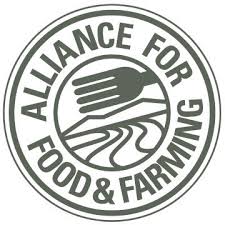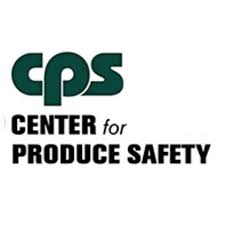
Not many of us have experienced truly lean times, where fresh, safe food is simply unavailable. I’ve written in the past about having fresh fruit and vegetables all year long and here I am, looking out the window in the middle of winter enjoying a fresh Caesar Salad! One trip to the grocery store and we are reminded of our abundance. How wonderful it is to have a food supply chain that works as efficiently as ours. How fortunate we are to live in such great times!
But this Dirty Dozen list inspires a rant.
The so-called Dirty Dozen is a list put out by a lobbying organization alleging toxic levels of pesticides on our fresh produce. CNN published this article written by a lobbying group called the Environmental Working Group (EWG), and many other mainstream media sources followed suit.
While the EWG’s intentions might be good, I wanted to peel back the layers a little and take a look at the point of view. I’m not a big fan of facts aligned in such a way as to arrive at a predetermined outcome; far better to have the facts lead me to the outcome. But I understand the world we live in and fabricated headlines often lead the day. Pre-determined narratives can override honest reporting, and opinions are often positioned as facts.
The stated goal here comes right in the headline: Dirty Dozen. It seems the goal is to find 12 fresh produce items to put on the list and dump them all in a category, call them all dirty. It’s a clever name, no doubt.
Let me put some context to this so-called Dirty Dozen list.
There are many substances that are harmful. Having someone on the lookout is necessary and I’m certainly not putting down the organic industry. Today’s food supply chain systems are complex, and feeding millions of people carries a heavy responsibility. We all must be vigilant.
But let’s look at some facts. I like facts. People make good decisions when they have all the facts. Plus, I like to eat fresh food and want everyone to eat fresh, lead a healthy lifestyle and not live in fear. I presume the Dirty Dozen folks love their fresh food too. And we, the consuming public, deserve to know what is really going on with our food supply chain. It’s a huge job getting food to market in a transparent way and the integrity of the producers, the packers and the distributors are at stake. Agencies that monitor the safety and quality of our food have a responsibility to be fact based. I like it when reasoned minds lead the day.
To try to put some context to the Dirty Dozen I went to fact-based databases and looked at what scientists and the US Department of Agriculture had to say.
 There is a group called the Alliance for Food and Farming that clearly states on their website where they stand:
There is a group called the Alliance for Food and Farming that clearly states on their website where they stand:
Our mission is to deliver credible information about the safety of produce. The AFF does not engage in any lobbying activities, nor do we accept any money or support from the pesticide industry.
These folks are not lobbyists. That’s a good start. But let’s do a quick comparison of the data.
The AFF publishes a pesticide calculator on their website. This is a mathematical system that shows the number of servings of a given fruit or vegetable that a person (adult male, adult female, teenager, or child) would need to consume to have a minimal reaction to the chemicals that may have been applied at the maximum dose allowable to the fruit or vegetable. These measurements reflect a scientific concept called the Dose-Response Relationship. As stated on the AFF website:
Dose-Response Relationship Definition
From a scientific point of view it is important to know that when considering the safety of any substance, it is important to understand what is known as a "dose-response relationship." This means that almost every substance — even water or oxygen — can be toxic at some level. For every product there is a point, or a dose level, that will not produce a response in a living organism. In the world of pesticide regulation, that point is called the No Observed Adverse Effect Level.

If you analyze the data, it seems that the amount of fresh produce a person would have to ingest daily to rise above the threshold of the "No Observed Adverse Effect Level" is quite high: When you compare the Dirty Dozen List to the amount of servings required for a minimal response, the risk of fresh produce on the list seems to be way overblown.
Take a look at the #1 offender on the Dirty Dozen list: strawberries. An adult male would have to consume 635 servings (8 large strawberries = one serving) or 5,080 strawberries per day to be above the USDA’s acceptable threshold. That many strawberries is equivalent to 318 1# clamshells, 40 trays, or about 1/3 of a pallet every day to drive a toxic reaction. And that is ONLY if the pesticide level was at the maximum legal tolerance!
That’s an insane amount of strawberries!
It seems that this Dirty Dozen list doesn’t push the discussion forward and, sadly, only promotes irrational fear in the mind of the reader. If the EWG’s goal is to create headlines I’d say they’re on track. But if their goal is to educate and inform the reader, this group has fallen short.
Another organization worth mentioning that puts research and science ahead of fear mongering is the Center for Produce Safety.
The Center for Produce Safety (CPS) is a collaborative partnership that leverages the combined expertise of industry, government and the scientific and academic communities to focus on providing research needed to continually enhance food safety. This level of collaboration allows CPS to fill the knowledge gaps on produce food safety.
I like this organization. They do a good job promoting and keeping up with the latest research for the broader topic of food safety. This organization’s thoughtful approach goes a long way to safe guard the public and promotes a sustainable food supply.
The Alliance for Food and Farming and the Center for Produce Safety are two organizations we need to trust and support.
In recent years, we know that mainstream media often publishes clickbait articles rather than reporting facts. The Dirty Dozen seems to be another instance of hype over fact, and that’s a shame because we need good information in this complicated world and news organizations like CNN were once trusted sources for that information.
If we’re going to be responsible and feed masses of people we’ve got to get beyond hype and fear and promote good management practices and be as honest and transparent as we can. We’re doing that in our own way here at Procurant by making information more available and trusted all across the global food supply chain. Safe food is not something we can afford to be deceptive about. The Dirty Dozen may gather headlines, but those of us in this industry should redouble our efforts to educate, inform and keep working to make fresh food available and safe.
Lorem ipsum dolor sit amet, consectetur adipiscing elit

These Stories on Food Safety
Procurant USA LLC
475 Alberto Way - Suite 230
Los Gatos, CA 95032
1-669-221-1026
info@procurant.com
